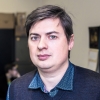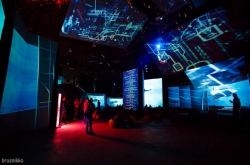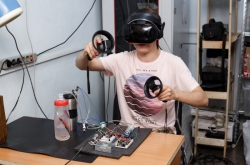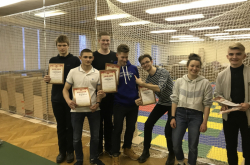Why it’s important to digitize the Solovetsky Monastery.
The cultural, historical and natural system of the Solovetsky Islands is unique in its abundance of well-preserved historical and religious objects. It was formed through the course of several centuries, peaking in 16-17-th centuries, which is why ITMO University’s expert group, who are currently working on the virtualization of the monastery, have chosen that period as the setting for their virtual model.
“History is the foundation of our future development. What’s important right now is that we use modern multimedia and VR technologies to their full capacity to provide access to historic knowledge to experts and anyone curious about history. In order to accomplish this, international associations and projects are formed these days that try to solve the issues related to digital preservation of cultural heritage. As part of this international movement, my colleagues and I are creating projects to preserve cultural heritage and secure grants to implement them”, - says Nikolay Borisov, project lead and head of ITMO University’s Design and Multimedia Center.
Museums’ research staff these days tends to support the creation of multimedia products that represent their institutions. The Solovetsky Museum-Preserve already has a room that features a virtual tour and uses modern technologies that provide visitors with an innovative way to learn about the Solovetsky monastery.

A virtual tour of the Solovetsky monastery. Credit: solovky.ifmo.ru
“Solovetsky monastery is currently under renovation. Naturally, they are trying to recreate the way it looked during a certain period of time. In this case, the monastery will be restored to its 19-th century state. It’s important for people working on a particular historical and cultural object to have the opportunity to observe the object’s historical look throughout a certain period of note. That is why the staff here had the idea to model and to visualize the Solovetsky monastery complex as a three-dimensional model of its 16-17-th century appearance, when it was still in its prime”, - explains Artem Smolin, project co-lead, head of ITMO’s Department of Engineering and Computer Graphics and leading engineer of Design and Multimedia Center.
Who works on the project
Only a cross-disciplinary approach can make possible a venture that so closely ties the academic and the technological. For this reason the team working on the Solovetsky monastery project today is made up of experts in arts and non-technical sciences (history, archaeology, culturology, etc.), as well as engineers whose goal is to represent historical data in a digital form. The advantage of this alliance is that their activities are interspersed: for a period of time, the engineers must learn to think like archaeologists, while historians and culturologists need to approach their usual tasks from a technological angle.
Solovetsky Museum-Reserve has a whole team of architects and art experts who provided the technical team with all the necessary materials and documentation that show the monastery’s state in 16-17-th centuries. Using this data, the staff at ITMO’s Department of Engineering and Computer Graphics is working diligently to recreate the historical look of the entire Solovetsky monastery complex. The results will be made available to the public using a multimedia information service, accessible freely on the internet. In total, about 20 experts from both parties are involved in the project.

A virtual tour of the Solovetsky monastery. Credit: solovky.ifmo.ru
ITMO University’s team is no strangers to virtual reconstruction of important historical objects and events: in 2014, a team of experts teamed up with well-known architects and archaeologists to develop a multimedia service dedicated to the fortresses of Russian Northwest. They also worked together with Alexander Chepurnov, Rector of Russian State Institute of Performing Arts, to recreate the 1896 premiere of Anton Chekhov’s “The Seagull”. This includes the three-dimensional model of the stage in Aleksandrinsky Theatre, recreation of its stage design and the watercolor drawings of the characters and scenery. The end result was a meticulous recreation of three of the play’s acts.
Project teams often include not only experts, but students, too. Postgraduate and Master’s students from the Department of Engineering and Computer Graphics are also taking part in the creation of the model of Solovetsky monastery complex.
What the multimedia information service looks like
The project’s main website is already up and anyone can visit it to see what has already been accomplished. At this stage, the fortress and the temple complex have been reconstructed. The experts are now focusing on the other sites, such as utility areas, hermits’ buildings and inner courtyards.
“This multimedia resource will be of use not only to professional historians, but also to anyone who is interested in the Solovetsky monastery and wants to know of its historical background. Thanks to the cooperation of the Museum-Reserve’s qualified staff, who are overseeing the reconstruction, the project is guaranteed to be very informative and authentic”, - says Nikolay Borisov.

A 3D-model of the architectural ensemble
An issue faced by both the staff at Solovki and the university’s employees is the accumulation of accurate historical data on the architectural complex.
“There’s a great deal of information on any historical object on the internet, but it’s not organized and is often incorrect. People go on tours, take photos, publish them on the web and then caption them with info taken from various sources, if any. What happens next is that the information on an object is spread through the web and becomes very unreliable. We’d like to accumulate all the verified information in one systematized resource with the help of historical experts”, - comments Artem Smolin.
The information on the history of the monastery is represented on the website not just in text – a series of short documentaries on several objects is also available. It includes not only regular footage, but 360 degree videos as well. The “cherry on the cake” of the project is the 4D virtual tour (the fourth dimension is time). The map contains fifteen “points of presence”. When pressing a “point of presence”, a menu appears that provides a choice among three data components: a 360-degree tour of the chosen part of the complex, with commentary by a professional guide; a 3D-model of the same part of the monastery in 16-17-th century; a description of the changes and transformations it undertook in the time from 16-th century to the modern day. Using VR technology, the interactive 4D tour allows visitors to see the parts of the monastery that haven’t survived to modern day, but have been reconstructed using archive data.
40 minutes-long tour of the Sekirnaya Mountain, conducted by deputy head of Solovetsky Museum-Reserve Oleg Volkov, is also available. It was filmed in 2015 and is one of the first 360-degree virtual tours in Russian museum practice. Volkov’s tour is augmented with archival footage and images embedded in the video.

Presenting the virtual tour
How the technical issues were solved
According to Artem Smolin, the hardest part of working on the project coordinating the work between the museum’s art and history experts and the university’s engineering specialists. The team faced several process tasks. First, they had to make a decision regarding the visualization of the fortress’s ramparts. In such cases, texture is often “tiled”: a small sample of stonework is copied and multiplied. Reusing the same image saves resources. However, for this task the team decided to employ a different method.
“The object is big – much bigger than ones we’ve worked on before. The boulder ramparts are a unique architectural object. We had to recreate them perfectly and make them three-dimensional. We decided to employ the photogrammetry method: we photographed the walls’ texture and developed an algorithm to apply them to a model. The results of this work can now be seen on the project’s website in the “Visualizations” section” – shares Artem Smolin.
High-definition texture maps were made by hand for some of the objects in the complex using existing photographs. To optimize efficiency, the engineers made smaller copies of the texture maps (16K, 8K, 4K) that are used when an object is at a distance. For the purpose of not having the boulder-made objects look flat, special software was used to generate height maps and normal maps that would be applied to the basic models.

Artem Smolin
Making the 360-degree videos also required the solution of several technological tasks: finding the optimal camera placements, analyzing weather conditions, etc. The filming was done using a two-lens camera system developed at ITMO University specifically for the purpose of making 360-degree videos with Entaniya Fisheye lenses.
Future plans
ITMO University’s team still needs to finish creating the rest of the models of the architectural ensemble’s objects as well as to present them in multimedia form on the project’s website. However, they already have some ideas for new projects. The Solovetsky monastery is famous for its prolific exhibition activity and the staff there is currently working on a new exhibition focused on the saints and zealots of the monastery.
“This is a complex project in which ITMO University can employ various technologies. We’re planning to further develop the multimedia part of the exhibition. But part of the challenge is also that many historical artifacts needed for the exhibition are no longer at Solovetsky monastery, as they’ve been given to the collections of Russian Museum, Museum of History of Religion, etc. The idea is to make “optoclones” of numerous important artifacts that are currently held at different places; the optoclone technology is well-developed at ITMO University and could be used to present these objects at the exhibition. We could also work on the project’s lighting design and solve a few of the light-related issues in the museum’s rooms. Experts in lighting design also work at ITMO University.
We also have an idea on how to use 3D-printing in our project. The monastery’s sacristy holds a wooden model of Solovetsky monastery as it appeared in 17-th century, but it’s not completely correct according to our archive data. Using the 3D model we created during the project, we could print a new model in plastic or any other material”- shares Nikolay Borisov.







